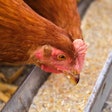
Corn and soybean meal, the primary components of poultry feed rations, entered an aggressive bull market cycle in 2021-22, similar to what many other commodities went through during that same time period.
For broiler and turkey producers, enough lift was generated for end product values that exploding feed costs did not represent a pressing concern, at least not to the degree they might have been under more “normal” circumstances. Elevated feed input markets shot up the priority list, however, once those price increases for broiler and turkey meat evaporated.
Swimming in corn
Subpar yields in 2019 and 2020 exacerbated by surging demand laid a foundation for corn prices in the U.S. to average comfortably north of $6 per bushel the next two years. Last year, however, featured a record yield of 177.3 bushels per acre (bpa) buoyed by the largest harvested area since 2016 at 86.5 million acres, according to the U.S. Department of Agriculture (USDA).
With demand also ebbing, it implies that ending corn stocks (or “carryout”), a widely-used metric to quantify supply-side sensitivity, should top 2 billion bushels for the 2023/24 marketing season. Even with fairly conservative acreage and yield assumptions for the upcoming crop season, the odds appear reasonably that next year’s carryout also exceeds two billion bushels, a level that is generally considered more of a surplus.
Expanding soybean crushing capacity
The recent backstory for soybeans is similar to corn, although it appeared that supply-side relief in this segment would be slower to materialize thanks to last year’s acreage setback and sluggish yields.
USDA provided buy-side market participants with a huge gift in its final survey of the 2023 crop season, with a surprisingly large upward adjustment to the average U.S. soybean yield to 50.6 bpa. That helped spark a defensive move in the soybean complex, and downside pressures picked up steam as earlier concerns about South America’s pending soybean harvest gave way to a more optimistic view.
Soybean crushing capacity in the U.S. keeps expanding to meet growing demand for soybean oil, and it is widely assumed that soybean acreage will rebound in 2024 to help meet that demand, arguably a bearish development for meal.
Significant cost reductions
At the peak of this latest bull market cycle, corn exceeded $7 per bushel for a brief stretch while soybean meal topped $500 per ton. This monumental shift in the fundamental landscape for both over the past year implies a prevailing range for the corn market of between $4.00 and $4.50 per bushel and a range for soybean meal of between $300 and $350 per ton.
Poultry companies are already seeing year-over-year reductions in average feed costs of at least 25%. There is a reasonably high chance of this relief extending into 2025 unless something incredibly unfortunate happens on the weather front in the coming months.
Looking at historical cycles and other long-term market developments, feed costs will inevitably turn higher again, but U.S. poultry companies have a golden opportunity right in front of them that they should try and maximize.

















